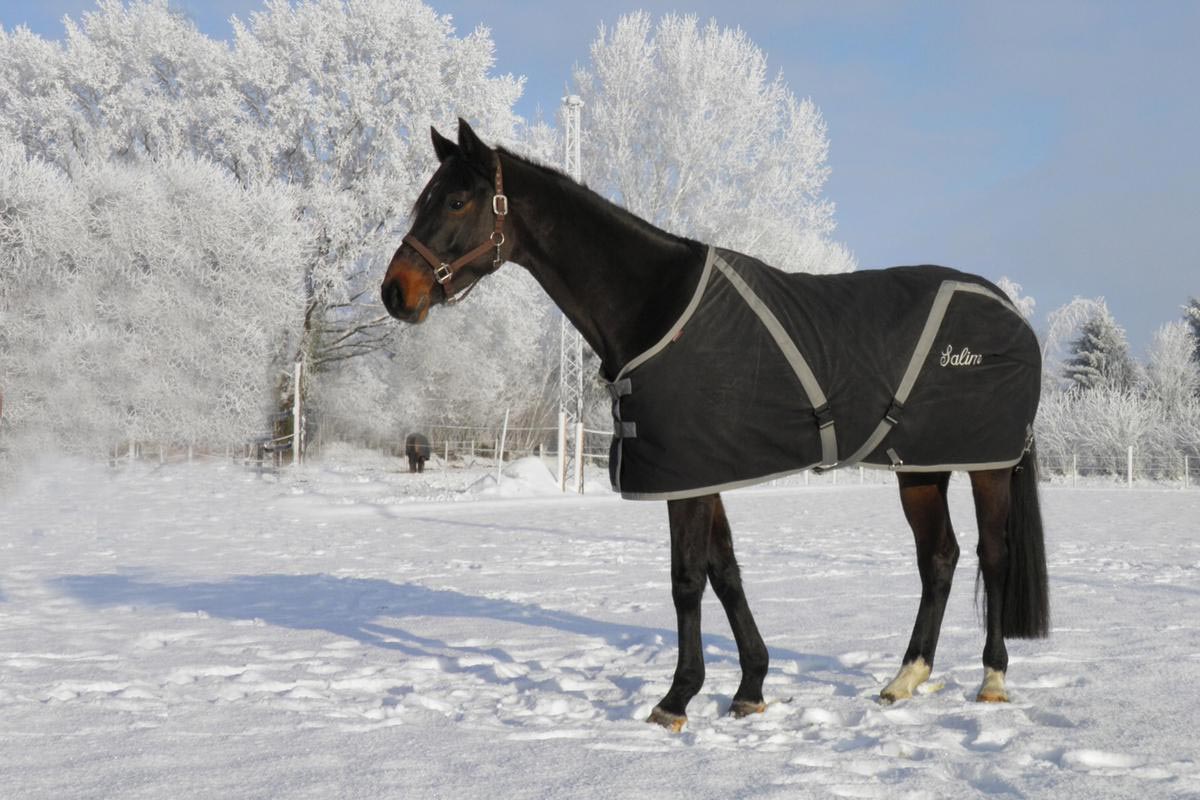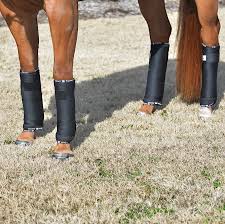
Dr. Eleanor Kellon, Staff Veterinary Specialist for Uckele Health & Nutrition
It happens every winter. A horse that may not even have a prior history of laminitis is found to be very lame and reluctant to move. It's more than the typical hesitation horses show on hard, frozen ground. Looks like laminitis but the feet aren't hot. What's going on?
Cold-induced hoof pain strikes horses with insulin resistance. IR is a well described risk factor for laminitis, but even when horse is not glaringly lame it is causing damage to the laminae. We haven't uncovered all the mechanisms behind laminar damage from high insulin levels, but one known factor is elevated levels of endothelin-1.
Endothelin-1 is a peptide (small protein) produced by the cells lining the interior of blood vessels. It is the most potent vasoconstrictor known and is normally balanced by production of the vasodilating chemical nitric oxide. Cold-induced reduction in blood supply to the hoof when superimposed on the pre-existing high endotheli-1 activity may explain why some IR horses develop hoof pain in cold weather, but normal horses do not.
Cold stress may also cause insulin to rise. Insulin resistance is part of the metabolic adaptation to cold weather in several species. Researchers have also noted insulin levels become erratic in horses in cooler weather.
Laminitis caused by high insulin is different from laminitis due to other causes. Activation of enzymes and inflammatory reactions are not part of the picture. This probably explains why the usual treatment with NSAIDs [nonsteroidal anti-inflammatory drugs] like phenylbutazone has little effect. There is help though.

Blanketing the horse when temperatures dip below the equine thermoneutral temperature of 45 F helps avoid cold stress. Keeping the lower legs wrapped and feet protected inside lined boots also helps maintain normal circulation to the extremities.
Adaptogens are herbs that support a healthy response to stressors like cold weather. Jiaogulan [Gynostemma pentaphyllum] is a particularly good choice because this herb is also known to support production of the vasodilator, nitric oxide. Jiaogulan should be given twice daily, preferably before a meal. Most horses love the taste and will lick it up as a powder or paste.
L-arginine is the amino acid precursor for nitric oxide and can be supplemented along with the Jiaogulan. L-citrulline is another amino acid that the body can convert to L-arginine for nitric oxide production. Cold stress also results in considerable oxidative stress and antioxidants can help neutralize these free radicals.
Finally, acetyl-l-carnitine supplementation can be indicated for support of normal nerve function and glucose handling.
When you understand the trigger of winter laminitis you can support the horse with simple measures to minimize cold stress and maintain normal blood flow to the feet.
Uckele Health & Nutrition, maker of CocoSoya®, offers formulas to support healthy blood flow to the feet.
Jiaogulan supports circulation in the feet, which nourishes the tissue, encouraging hoof growth. It also supports normal insulin sensitivity and glucose handling and synthesizes Nitric Oxide, a simple gas that is a potent dilating agent.
LaminOx supports healthy circulation, comfort and metabolic balance. Promotes healthy vascular function with Jiaogulan to promote circulation and structural hoof health. Contains Arginine, a precursor to nitric oxide, which plays an important role in healthy blood flow.
Acetyl-l-carnitine helps nerve cells maintain and replace themselves by promoting new cell growth and protection. It also activates an enzyme that directs glucose away from storage as glycogen and into energy generating pathways.
About Dr. Kellon - Dr. Eleanor Kellon, staff veterinary specialist for Uckele Health & Nutrition, is an established authority in the field of equine nutrition for over 30 years, and a founding member and leader of the Equine Cushings and Insulin Resistance (ECIR) group, whose mission is to improve the welfare of horses with metabolic disorders via integration of research and real-life clinical experience. Prevention of laminitis is the ultimate goal. www.ecirhorse.org.
Uckele Health & Nutrition, maker of CocoSoya, is an innovation-driven health company committed to making people and their animals healthier. On the leading edge of nutritional science and technology for over 50 years, Uckele formulates and manufactures a full spectrum of quality nutritional supplements incorporating the latest nutritional advances. www.uckele.com.

































